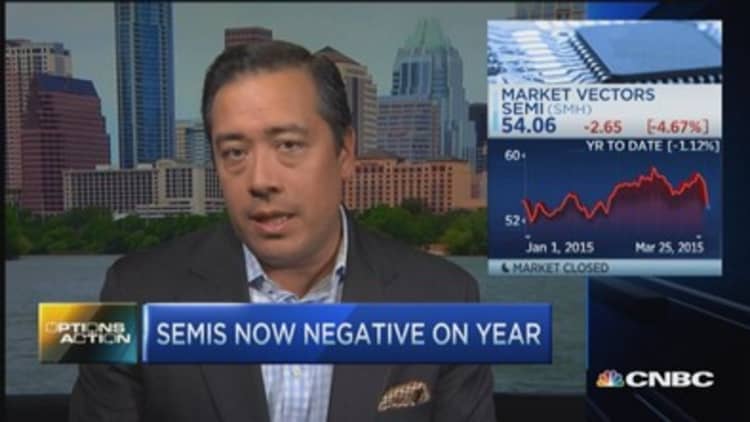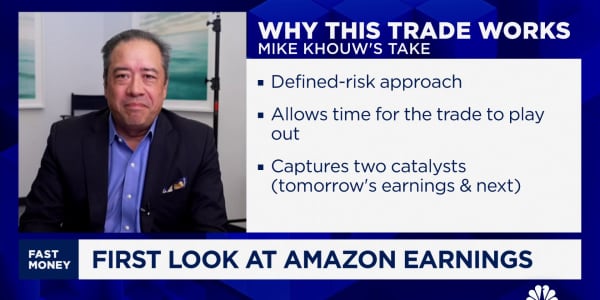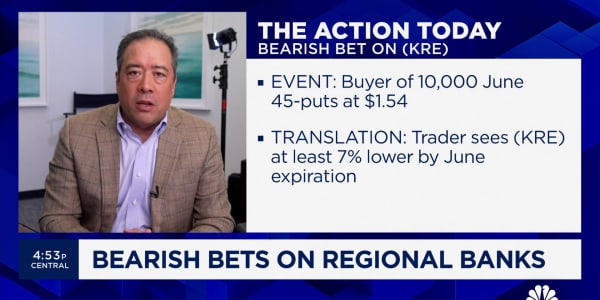
After a brutal selloff, the semiconductor sector is now negative on the year. And some traders just reaped enormous profits by betting there will be a lot more pain to come.
The semis continued their selloff on Thursday after taking a brutal blow the day before. The Market Vectors Semiconductor ETF (trading under the symbol SMH) was down 2 percent after tumbling 4.67 percent on Wednesday, the ETF's worse day in more than five months. The SMH is now below its technically significant 50-day moving average and is on track to see its first negative quarter in 10 quarters.
But traders betting there may be more downside ahead just made quick gains in the last 24 hours.
On Wednesday, when put volume was a whopping 17 times its daily average, two huge trades for a total of 110,000 contracts caught the eye of the market. One specifically was a diagonal calendar spread. Some 50,000 April 55-strike put contracts were sold at $1.55 each while an equivalent amount of May 53-strike puts were bought at $1.40 each. Puts are bearish options that give the purchaser the right to sell shares at a specific price on a future date.
According to CNBC contributor Mike Khouw, the trader was taking on a new spread trade but was instead moving their bearish position one month out and with a slightly lower strike price. Thus the trader had a $7 million dollar bet that the SMH will fall by at least an additional 4.6 percent over the course of the next two months.
Read More
It turns out the trader didn't have to wait that long to see the ETF crumble.
On Thursday, the SMH was trading below $53. The May 53-strike puts opened as high as $2.15, meaning the trader's position saw unrealized gains of $3.75 million or almost 54 percent in just a matter of hours. But prices on the options came off from the open and were at $1.66 each by 10 a.m. ET. That means the trader's profit was reduced to "just" $1.3 million.
Khouw speculates the trader's move to a later date was done to capture any disappointments from upcoming earnings in the semiconductor sector.
"What you are looking at is a $250 million notional bet to the downside that there could be more pressure in the semiconductors through the earnings season," Khouw said.
Until Wednesday's selloff, the semiconductor sector was one of the hottest in 2015. The SMH had been up nearly 5 percent on the year and 26 percent over the previous 12 months.
Khouw sees this recent large buy of puts as a smart move given that the cost was just a little over 2 percent of the ETF share price.
"It might be a fairly inexpensive hedge for somebody who decided that they were going to stay long these with the market acting as volatile as it is," said Khouw.






